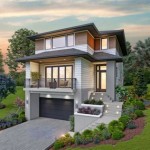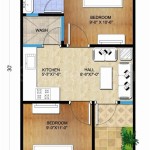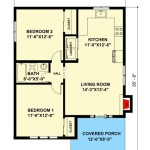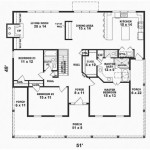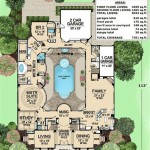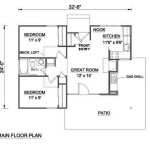House Plans for Narrow Lots with Garage: Maximizing Space and Functionality
Building a home on a narrow lot presents unique architectural and design challenges. The limited width necessitates creative solutions to ensure comfortable living spaces, adequate storage, and, importantly, a functional garage. House plans for narrow lots with a garage must prioritize efficient use of space, vertical expansion, and strategic placement of structural elements.
The goal of such plans is to create a residence that feels spacious and welcoming, despite the physical constraints. Careful consideration must be given to factors like natural light, traffic flow, and the integration of the garage into the overall design aesthetic. This article explores various aspects of house plans tailored for narrow lots with a garage, providing insights into maximizing functionality and achieving a desirable living environment.
Optimizing Garage Placement and Design
The placement of the garage is a critical decision that significantly impacts the overall layout and functionality of a narrow lot home. Several options exist, each with its own advantages and disadvantages. A front-facing garage, while common, can dominate the facade and make the house appear narrower. However, in some cases, zoning regulations or existing site conditions may necessitate this approach. To mitigate the visual impact, features such as landscaping, varied textures, and a thoughtfully designed garage door can be employed.
A rear-entry garage, accessible from an alley or side street, is often a preferable alternative. This configuration allows for a more appealing street presence and can enhance the curb appeal of the home. It also frees up the front yard for landscaping or outdoor living spaces. However, a rear-entry garage may require a longer driveway and careful consideration of pedestrian access to the house.
A side-entry garage is another possibility, particularly for corner lots or lots with sufficient side yard space. This option can provide a balance between accessibility and aesthetics. The garage door can be positioned discreetly to minimize its visual impact. Furthermore, a side-entry garage can create a natural buffer between the house and neighboring properties.
Beyond placement, the design of the garage itself requires careful attention. Given the limited footprint of a narrow lot, maximizing the garage's functionality is essential. Consider incorporating features such as overhead storage racks, built-in shelving, and a workbench area. The garage can also serve as a mudroom, providing a convenient transition space between the outdoors and the main living areas. Adequate lighting and ventilation are also crucial considerations.
The dimensions of the garage should be carefully planned to accommodate the intended vehicles and storage needs. A single-car garage may suffice for some homeowners, while others may require a two-car garage or even a tandem garage (where cars are parked one behind the other). The height of the garage door should also be considered, particularly if taller vehicles, such as SUVs or trucks, are to be accommodated.
Material selection is also important for the garage door and exterior siding. Choosing materials that complement the overall architectural style of the house will create a cohesive and visually appealing design. Opting for durable and low-maintenance materials will also reduce long-term costs and upkeep.
Maximizing Interior Space and Functionality
Given the challenges of a narrow lot, the interior layout of the house must be carefully planned to maximize space and functionality. Open floor plans are often favored, as they create a sense of spaciousness and improve traffic flow. Combining the living room, dining room, and kitchen into a single, interconnected space can make the house feel larger and more inviting.
Vertical expansion is another key strategy for maximizing living space on a narrow lot. Building upwards, with multiple stories, allows for a greater square footage without increasing the footprint of the house. Staircases should be strategically placed to minimize their impact on the overall layout. Consider using open staircases or floating staircases to further enhance the sense of spaciousness.
Incorporating built-in storage solutions is essential for maximizing usable space. Built-in shelving, cabinets, and drawers can provide ample storage without taking up valuable floor space. Utilizing vertical space for storage, such as tall pantry cabinets or floor-to-ceiling bookshelves, is also a smart strategy.
The use of natural light can significantly enhance the feeling of spaciousness in a narrow lot home. Large windows, skylights, and light wells can bring in abundant natural light, making the interior feel brighter and more airy. Consider strategically placing windows to maximize sunlight exposure while also maintaining privacy. Light-colored paint and finishes can also help to reflect light and create a more open feel.
Multifunctional spaces are invaluable in narrow lot homes. A guest room can double as a home office. A finished basement can be used as a recreation room or a media room. A loft area can serve as a reading nook or a play area. Designing spaces that can adapt to different needs can significantly enhance the functionality of the house.
Careful consideration should be given to the placement of bathrooms and utility rooms. These spaces should be located in areas that are easily accessible but do not detract from the main living areas. Stacking laundry appliances and using compact fixtures can help to save space in these rooms.
Addressing Structural and Regulatory Considerations
Building on a narrow lot often presents unique structural and regulatory challenges. It is crucial to consult with experienced architects and engineers to ensure that the house is structurally sound and complies with all applicable building codes and zoning regulations.
Foundation design is particularly important on narrow lots, as the proximity to neighboring properties can impact stability. Special foundation systems, such as underpinning or piling, may be required to ensure the structural integrity of the house. The foundation must also be adequately waterproofed to prevent moisture problems.
Fire safety is another critical consideration, especially when houses are built close together. Fire-resistant building materials, such as concrete block or brick, may be required for exterior walls. Fire separation walls may also be necessary between adjacent properties. Smoke detectors and fire sprinklers should be installed to provide early warning and suppression in the event of a fire.
Zoning regulations often dictate setbacks, height restrictions, and other limitations on building on narrow lots. It is essential to understand these regulations before starting the design process. Variances may be possible in some cases, but obtaining them can be a lengthy and complex process. Working with a local architect or builder who is familiar with the zoning regulations in the area can be invaluable.
Drainage and stormwater management are also important considerations. The site should be properly graded to ensure that water drains away from the house. Gutters and downspouts should be installed to collect rainwater and direct it to a designated drainage area. In some cases, underground drainage systems or rain gardens may be required to manage stormwater runoff.
Construction access can be challenging on narrow lots, particularly in densely populated areas. Careful planning is required to ensure that construction materials can be delivered and stored safely without disrupting neighboring properties. Staging areas may need to be established off-site to minimize congestion.
Noise and vibration control are also important considerations during construction. Measures should be taken to minimize noise and vibration levels, particularly during excavation and foundation work. Construction activities should be scheduled to minimize disruption to neighbors.
Ultimately, successful house plans for narrow lots with a garage require a holistic approach that integrates architectural design, structural engineering, and regulatory compliance. By carefully considering the placement of the garage, maximizing interior space, and addressing structural and regulatory considerations, it is possible to create a functional and aesthetically pleasing home that meets the needs of modern living.

20 Luxury Narrow House Plans With Front Garage Images Small Traditional Plan

Simple Narrow Lot House Plans Houseplans Blog Com

Morning Star Farm House Plan Narrow Archival Designs

Narrow House Plans For Lots Homes By Mark Stewart Home Design

House Plan 82250 Narrow Lot Style With 1588 Sq Ft 3 Bed Bat

Narrow House Plans Lot Ranch Style

Budget Friendly Narrow Lot House Plan

2 Story House Plans For Narrow Lots Blog Builderhouseplans Com

Simple Narrow Lot House Plans Houseplans Blog Com

Plan 056h 0005 The House

